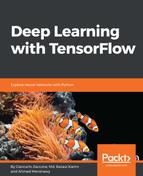Deep Neural Networks (DNNs) are artificial neural networks strongly oriented to deep learning. Where normal procedures of analysis are inapplicable due to the complexity of the data to be processed, such networks are an excellent modeling tool. DNNs are neural networks, very similar to those we have discussed, but they must implement a more complex model (a great number of neurons, hidden layers, and connections), although they follow the learning principles that apply to all machine learning problems (that is, supervised learning).
As they are built, the DNNs work in parallel, so they are able to treat a lot of data. They are a sophisticated statistical system, equipped with a good immunity to errors.
Unlike algorithmic systems where you can examine the output generation step by step, in neural networks, you can also have very reliable results, but sometimes without the ability to understand the reasons for those results. There are no theorems to generate optimal neural networks--the likelihood of getting a good network is all in the hands of its creator, who must be familiar with statistical concepts, and particular attention must be given to the choice of predictor variables.
For brief cheat sheet on the different neural network architecture and their related publications, refer to the website of Asimov Institute at http://www.asimovinstitute.org/neural-network-zoo/.
Finally, we observe that, in order to be productive, the DNNs require training that properly tunes the weights. Training can take a long time if the data to be examined and the variables involved are high, as is often the case when you want optimal results. This section introduces the deep learning architectures that we will cover during the course of this book.
